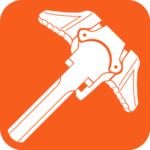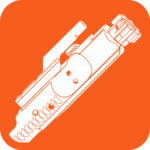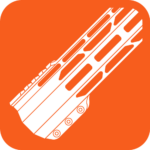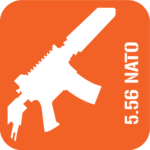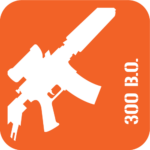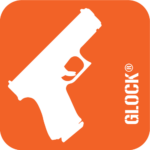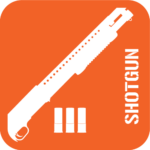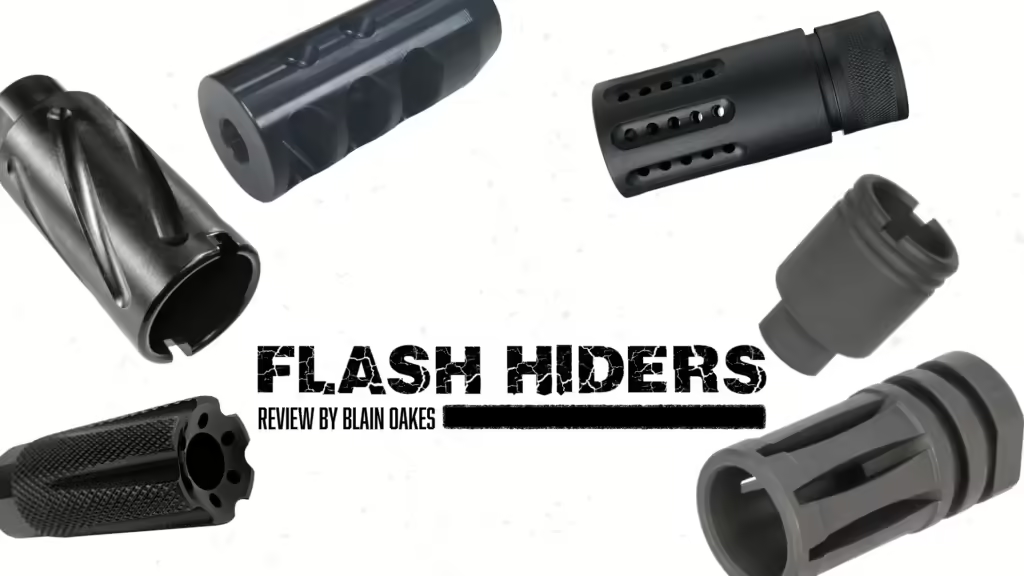
When a gun is fired, the powder that isn’t fully burned within the barrel burns off as it exits, creating a flash at the muzzle. This flash, especially visible in low-light settings, can temporarily impair night vision, disrupt a shooter’s sight picture, and reveal position. Flash hiders, also known as flash suppressors, are designed to disperse this gas and powder, reducing the ignition that causes a flash. Muzzle Devices Guide.
How Flash Hiders Work
Flash hiders use specific geometries and materials to scatter gas exiting the barrel, breaking up the light produced. By dispersing the gas in multiple directions, flash hiders reduce the flash’s intensity, allowing for better visibility in dim conditions and a more stable sight picture.
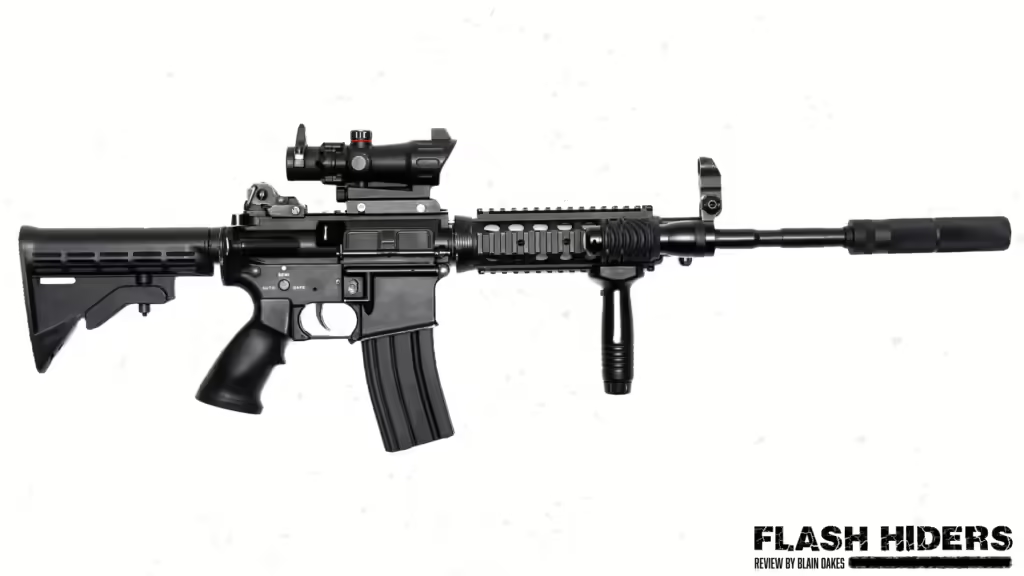
Popular Flash Hider Designs
- A2 Birdcage Flash Hider: A classic, reliable design, the A2 flash hider features slots that redirect gases to reduce flash effectively. It’s highly regarded for its dust-mitigating qualities, especially in AR-15 setups, due to its closed bottom.
- Pronged Flash Hiders: Featuring tines or prongs, these designs are excellent at dispersing gas and reducing flash visibility. They’re often seen in high-performance firearms used in low-light conditions.
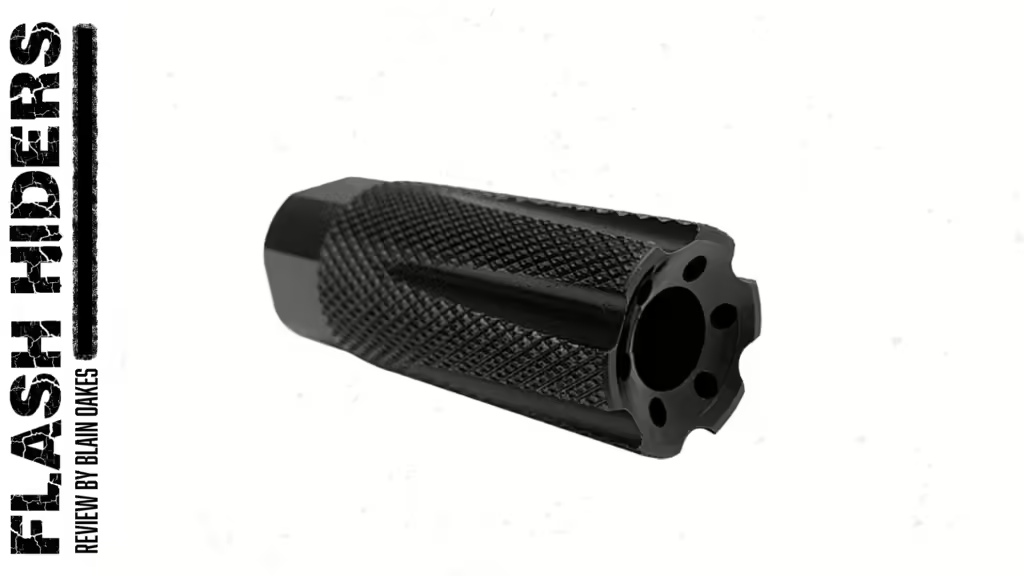
Muzzle Brakes: Reducing Recoil for Greater Control
One of the most sought-after muzzle devices, the muzzle brake, is essential for shooters looking to control recoil. Recoil can hinder accuracy and limit the speed at which follow-up shots can be taken, so reducing it offers a smoother shooting experience.
How Muzzle Brakes Work
Muzzle brakes feature ports angled rearward to redirect escaping gases. By pushing some of this energy back toward the shooter, the brake counteracts the rearward force generated by firing, effectively reducing the felt recoil.
Benefits and Considerations
Muzzle brakes offer substantial benefits, especially for high-caliber rifles. However, due to the force redirection, they can be louder than other muzzle devices, which may be a drawback in confined spaces or among groups. A common approach is finding a balance between effective recoil management and muzzle weight.
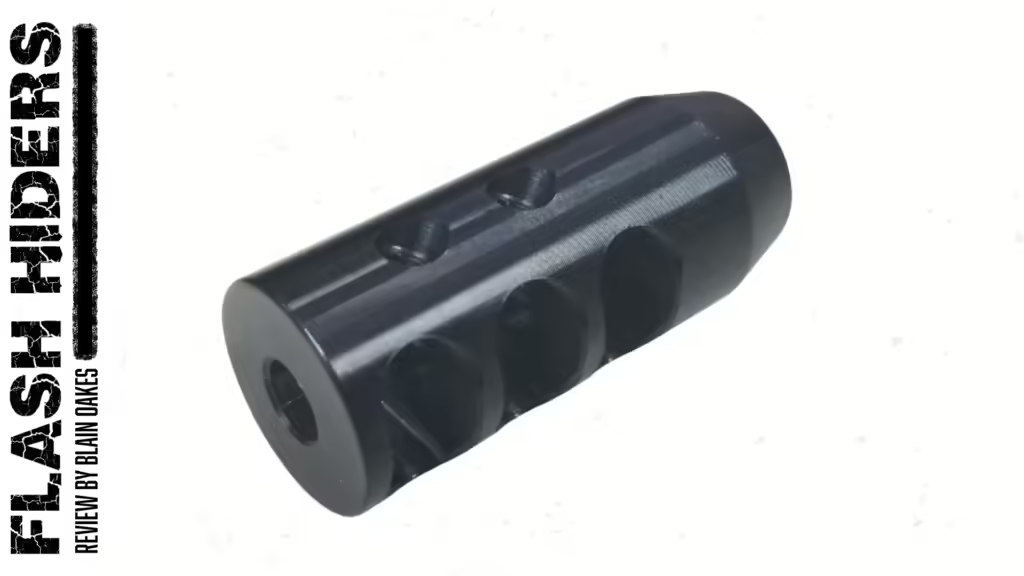
Compensators: Minimizing Muzzle Rise for Better Accuracy
Compensators are designed to counteract muzzle rise, which occurs when gas escaping from the barrel pushes the muzzle upward. This rise can affect the accuracy of follow-up shots, making a compensator a valuable asset for precision-focused shooters.
How Compensators Work
Compensators usually feature vertical ports that allow gases to escape upwards, applying downward pressure to the barrel. This pressure counteracts the natural tendency of the muzzle to rise after each shot.
Popular Compensator Options
- Single-Port Compensators: Simple yet effective, these devices provide a mild reduction in muzzle rise without adding excessive weight.
- Multi-Port Compensators: With multiple, strategically placed ports, these devices deliver strong muzzle rise reduction, ideal for competitive shooters who need fast, accurate follow-ups.

Flash Cones (Blast Cones): Controlling Concussion and Directing Blast
Flash cones, also referred to as blast cones, are a relatively new addition to the world of muzzle devices, designed to direct the muzzle blast forward. Unlike other devices that disperse or redirect gas in various directions, blast cones focus it downrange, providing a more comfortable experience for shooters and bystanders alike.
Benefits of Using Blast Cones
Blast cones are especially useful in close-quarter scenarios where suppressors are impractical. In addition to reducing flash, they limit concussive force for the shooter and anyone nearby, making them ideal for indoor or confined environments.
Who Should Consider a Blast Cone?
This device is an excellent choice for anyone who frequently shoots indoors or in close proximity to others, as it helps reduce the disruptive impact of the muzzle blast without compromising effectiveness.
Comparing Muzzle Devices: Which One Is Right for You?
Choosing the right muzzle device depends on your primary shooting needs. Here’s a quick comparison of the benefits each device offers:
| Device | Primary Benefit | Best Suited For |
|---|---|---|
| Flash Hider | Reduces visibility of muzzle flash | Low-light shooting, tactical applications |
| Muzzle Brake | Minimizes felt recoil | High-caliber firearms, rapid follow-up shots |
| Compensator | Controls muzzle rise | Precision shooting, rapid-fire disciplines |
| Blast Cone | Directs blast downrange | Indoor and close-quarters shooting |
Selecting the Right Muzzle Device for You
When choosing a muzzle device, it’s essential to evaluate your goals:
- For Night Shooting: A flash hider is a practical choice for those needing low-light concealment.
- For High-Recoil Guns: Muzzle brakes are ideal for powerful firearms where recoil reduction is critical.
- For Fast Follow-Up Shots: A compensator will aid in maintaining sight picture by controlling muzzle rise.
- For Indoor or Close-Quarters Use: A blast cone can improve comfort by directing blast forward, minimizing disruption for bystanders.
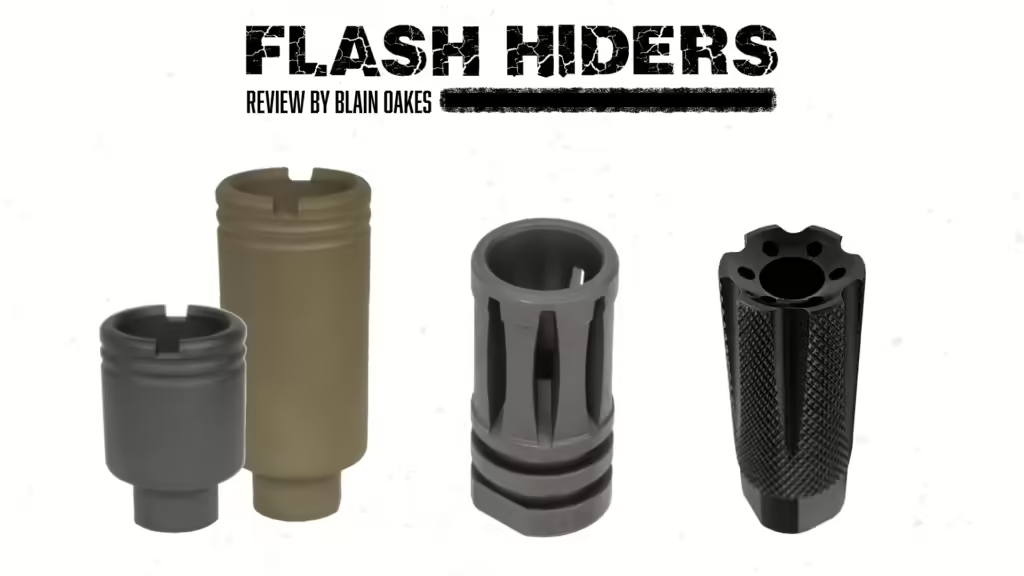
FAQs Muzzle Devices Guide
What is the main difference between a flash hider and a muzzle brake?
Flash hiders reduce the visible flash at the end of the barrel, while muzzle brakes minimize recoil by redirecting gases backward to counteract the gun’s rearward movement.
Can I use a muzzle brake and compensator together?
Some devices combine features of both, offering a hybrid solution, but generally, these devices are used separately to address specific recoil or muzzle rise needs.
Are muzzle brakes legal everywhere?
Muzzle brake legality varies by location. Always check local laws to ensure compliance before purchasing or installing any muzzle device.
Do compensators reduce recoil?
While compensators primarily control muzzle rise, they can offer a small degree of recoil reduction due to redirected gases.
Is a blast cone the same as a suppressor?
No, a blast cone does not suppress sound. It merely directs blast forward, minimizing concussive impact around the shooter.
Which device is best for short-barreled rifles (SBRs)?
Flash hiders and blast cones work well with SBRs, as they help manage the increased flash and concussive force often associated with shorter barrels.
Conclusion: Muzzle Devices Guide
Muzzle devices are much more than simple attachments; they are essential tools that can improve your shooting experience by controlling flash, recoil, and muzzle movement. Whether your focus is on visibility, control, or comfort, understanding the nuances of each device will guide you to the best choice for your shooting style. Trying out different devices on the range can reveal the ideal match, allowing you to find the perfect combination of stability, accuracy, and ease with each shot. Muzzle Devices Guide.
For those looking to expand their collection, testing a range of muzzle devices offers insights into each design’s practical benefits. With the right device, you’ll experience smoother shooting, reduced flash, and greater control—making each shot both enjoyable and precise.


